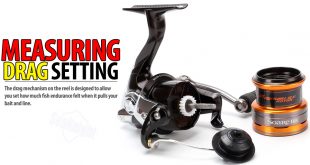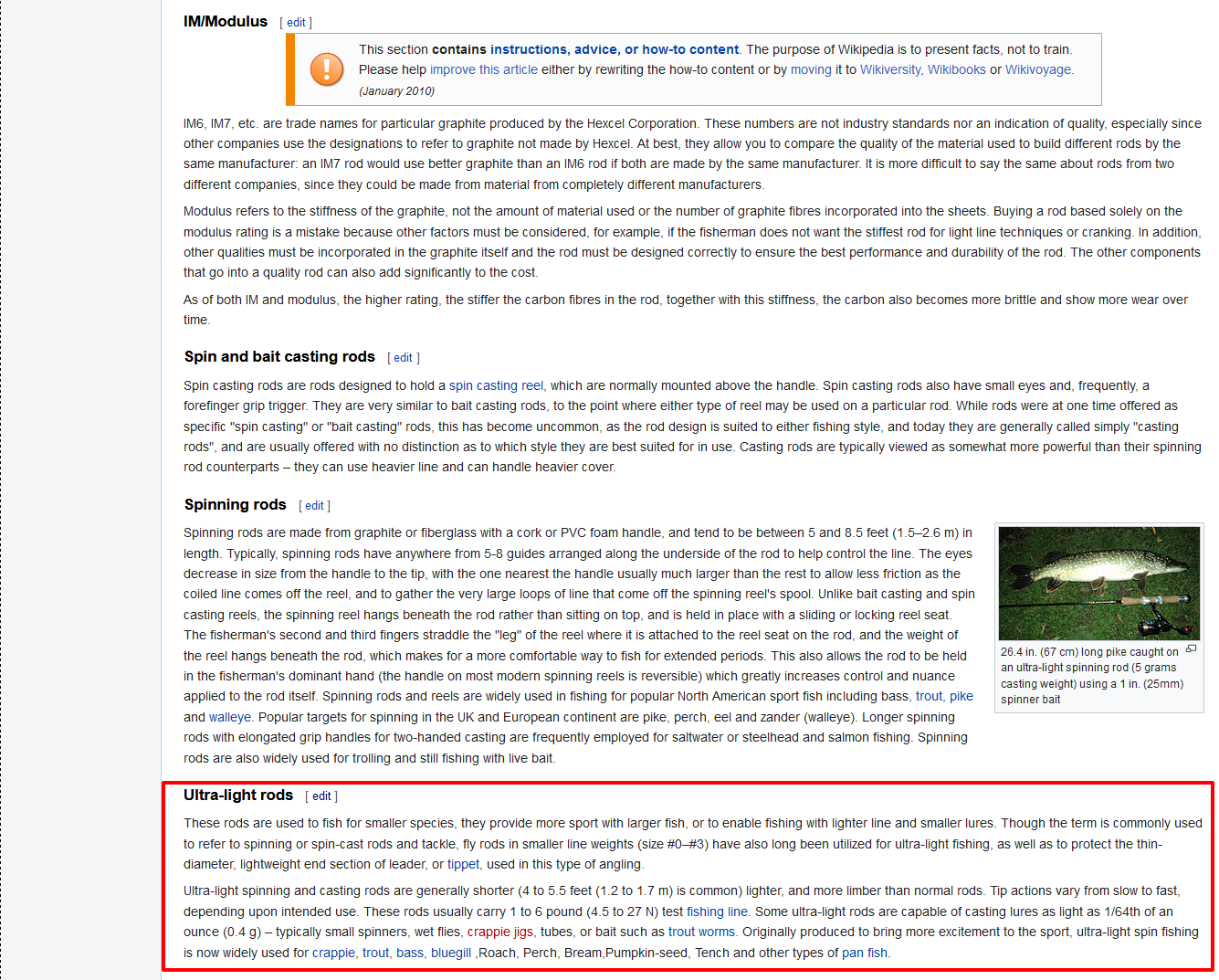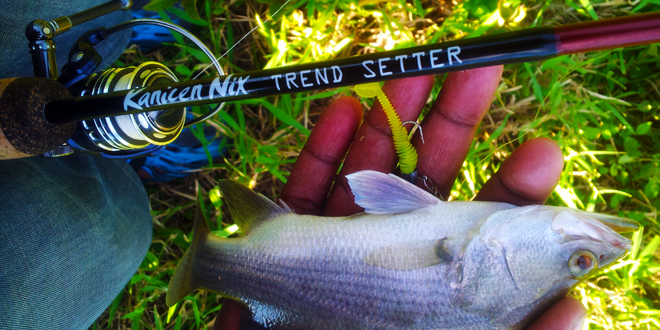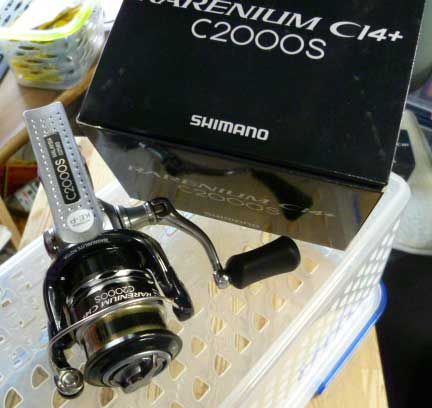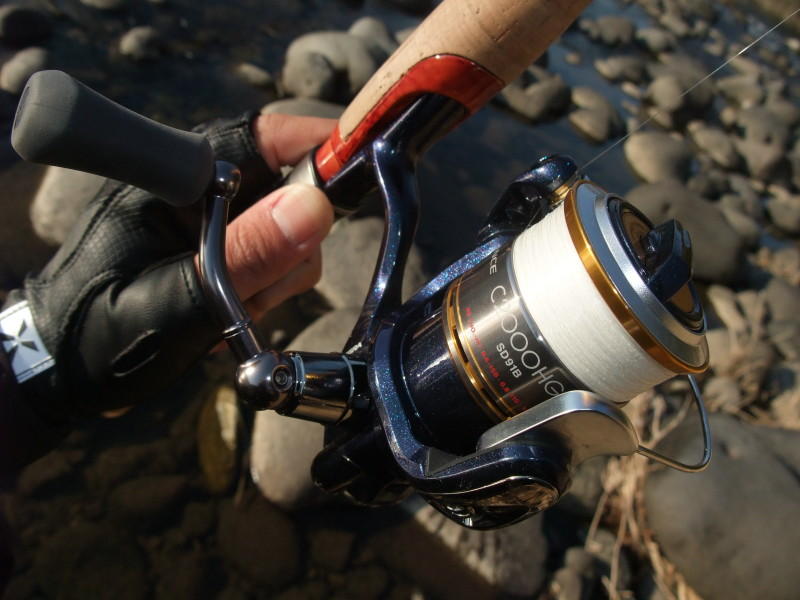Ultralight fishing has been existed for years and many still wondering or still confused what is the best setup that practical to be used for ultralight fishing. Honestly, question like this is very subjective due too much of own understanding/perception based on previous education (sharing from friends or based on previous existed technologies) and its colliding with current technologies. Universal understanding says; if you caught fish bigger than the setup then it’s considered ultralight for the fish and some says even they are using small lines or rods or even lures its considered ultralight fishing. Many still saying that using small lines without matching or balance the reel or rod also considered as ultralight. I really don’t know where they refer or how they got this whole idea because for me it defeat the idea of ultralight game. It’s pretty confusing actually so I dig around to get more info and relate it with on-field testing and findings.
Whatever your understanding is just get this “there is no right and wrong here”. It’s just individual understanding maybe based on their own research or someone said it and it just stuck to your brain for years and making it as facts or whatsoever.
You may want to downlod this PDF file (a book) written long back ago around 1930’s for reference: Click this like to download Waterlog-UL-SPINNING.
Another link you can read for reference are:
http://www.anglerwise.com/2011/03/24/what-is-ultralight-fishing/
Historian JL (HANS) VAN DER PAUW referred to the same book which you can read at his website:
You can download the book here:
http://jlvanderpauw.nl/wp-content/uploads/2013/03/Waterlog-UL-SPINNING.pdf
Whatever written here is basically for education / information purpose not to argue. It’s just some reference you can use to get started on ultralight fishing. But before you proceed please click the link below and read it few times until you understand. This info just for reference to get you started. These info has been there for years but recently due to few irresponsible individuals they tried to do amendment. Hope these info which have been used as reference by others not exploited by these scums.
Ultra-light spinning and casting rods are generally shorter (4 to 5.5 feet (1.2 to 1.7 m) is common) lighter, and more limber than normal rods. Tip actions vary from slow to fast, depending upon intended use. These rods usually carry 1 to 6 pound (4.5 to 27 N) test fishing line.
Reference: http://en.wikipedia.org/wiki/Fishing_rod#Ultra-light_rods
If above information altered by the time you check by some irresponsible individuals then you can refer to this screenshot (red box) or you can download the pdf file we’ve screenshot for better reference here Ultralight Fishing by Wikipedia
Note: Wikipedia used to be reliable source of information for many but due to the “attitude” of some scums it has become a place where they attack others for “revenge” purpose where they simply edit and insert false / biased information. These individuals are the person who caused the misleading. But still some research shows the articles came close to the level of accuracy if not edited by these scums.
Explanation on What Is Being Said
Paragraph 1: Ultra-light spinning and casting rods are generally shorter (4 to 5.5 feet (1.2 to 1.7 m) is common) lighter, and more limber than normal rods.
Explanation: When the statement is made at Wikipedia (too long ago) rods available in the market at that time normally/mostly between 4-5.5 feet and longer rods may not be available yet at that time and for that reason it’s not “common”. So, that’s the main reason the sentence above said ‘generally’. You need to understand with the statement “common and generally” which refer at that point of time (based on that situation) when the article is written.
Those days most rods are short which was created to suit the situation and needs/demands. Talk about 20-30 years ago one of the reason I can think now is the world still full of trees so the use of longer rods is not practical and the second reasons is availability of technology. But it has changed today and technology also improved a lot and the demanding for longer rods has become common.
Paragraph 2: These rods usually carry 1 to 6 pound (4.5 to 27 N) test fishing line.
Explanation: “Usually” 1-6lbs means through common practice which refer to “rules of thumb” which has been accepted by group of people.
Example: Everything is this world everything starts with a common idea. Then this common idea becomes a habit and that habits change to practice which later become a trend. And this trend later become standards which accepted with group of people which later for over period of time it become facts that normally will be accepted as a rule to be followed.
This is what Europe did years ago which a common idea started in ultralight fishing and now we continue it to make it even better and fun.
Paragraph 3: Originally produced to bring more excitement to the sport, ultra-light spin fishing is now widely used for crappie, trout, bass, bluegill, Roach, Perch, Bream, Pumpkin-seed, Tench and other types of pan fish.
Explanation: They said widely used because only those fish available at their place. And that’s the main reason they are the father of ultralight fishing because they created it. If it’s created here in Asia then you can find they will mention haruan/gabus/bujuk (channa), lampam, tengas, puyu and many others.
But we don’t have to accept it and follow what they did as it is. We can even do better with available technologies. We can bring ultralight game to a better level with more extreme method for maximum satisfaction. Innovate from what they have done by following the same concept and same understanding but with different technology and style.
The History
It’s said that Japanese is the founder in most ultralight (UL) setup and they have crafted many equipment over the years which is more trendy and more specialized. But from our research they upgraded what European/American created for more than a century. UL is the term used in Europe for spinning rod and are more focused on stream fishing while Japanese is focused on techniques based on their target fish. France is said the first country who started ultralight fishing and when its first documented during 30’s. Surprised? Me too. But do understand its documented first by them but its already started 100 of years ago before.
You may want to download this Waterlog-UL-SPINNING written old enough before some of us even born.
Then come this new generations start the whole new era of ultralight fishing based on their target fish to match the game and the fish they are hunting because the world is changing not only the environment but also technologies so its make more sense now when everything is about more excitement and this can only be done when its balance and matching.
Example: If they are looking for Trout then the best setup they will use normally are Trout rod and if Bass fishing they will use Bass rod which both normally only for spinning. This is the where UL (ultralight) is all started until the Japanese came and created BFS (Bait Finesse Systems) to catch fish based on their target. Now, it doesn’t mean Europe don’t use BFS, they use is based on their suitability but for ultralight fishing they will go with spinning because it’s more practical and easier.
Extreme Experience. Maximum Satisfaction
No matter what your game is, it won’t be interesting if you don’t challenge your fishing routine with more interesting methods. And for that reason we feel that pushing every angler to go beyond while enjoying the process of ultralight game is the key success in ultralight fishing.
Lots of anglers is still confusing with the term ultralight fishing but we believe everyone’s has their own ideology so again no right or wrong here. It’s just purely fishing.
What is the standard for Ultralight Fishing?
As said in Wiki and most references the standard specifications for UL are maximum of 6lbs for the rod and line, and to make it more challenging it will be great if the reel also follow the same standard so that its balance and matching. This will bring the whole game of ultralight fishing into new era full of excitements. Definitely fair game.
Fact is; many anglers don’t even bother to follow the line recommendation written on the rod. Yeah, heard many says “ahh its nothing.. no harm.. I never break my rods… and bla bla bla…”. This type of anglers definitely boring type and they will always stuck at the same place forever. No fun.
Now ask this… If its not important then why they put reference label on the rod? If its not important why it has been created? Many not able to give the right answers for this. Most of them just assume.
The fact is they gave references on the rod is for you to have some basic understanding the maximum load the rod can take, the maximum strength the rods has and for what kind of game it was created. These info is for you to use to balance it with the main line and the reel.
Power / Rod & Line Classification
Understanding what Power Line Rating is very important so that you won’t confuse with the term used by various manufacturers or individuals. Lots of anglers still confuse with power and action where some manufacturer wrote on the rod Action = UL but such things never exist actually. UL is not an Action; its Power.
1) Ultra-Light (UL)
– Not more than 6lbs.
– Example: 1-3,1-4,1-5,1-6,2-4,2-5,2-6, 3-6,4-6
2) Light (L)
– Not more than 12lbs.
– Example: 2-8,2-12,3-8,4-8,4-12,6-12,4-10,1-7,1-8 and etc.
3) Medium (M)
– Not more than 18lbs.
– Example: 6-15,8-14,8-16,8-17,10-18 and etc.
4) Medium-Heavy (MH)
– Not more than 25lbs.
– Example: 8-20,10-25,10-20,15-25 and etc.
5) Heavy (H)
– Not more than 30lbs.
– Example: 10-30,15-30,18-30,20-30 and etc.
6) Extra-Heavy (XH) 25-50lbs
– Not more than 50lbs.
– Example: 25-50,30-50,20-50 and etc.
7) Ultra-Heavy (UH) above 50lbs
– More than 50lbs.
Refer link below for more info:
http://www.stcroixrods.com/products/freshwater/avid-series-spinning/
As you can refer to above screenshot even St. Croix practicing the same. I have yet to find out solid info about standards power rating in fishing industry. As for now, take it as best practice and universal understanding and it depending on the manufacturer or the rod designer to classify the rod in which class it should be. And it’s all done based on their own feel, target fish and also on experience.
Normally, the lure recommendation weights is based on the line range as Ultralight rods are intended to cast lures weighing 1/32 (0.89 grams) to 1/4 ounce (3.54 grams). Medium weight rods can handle a range of lures at 3/8 (10 grams) to 3/4 ounce (21 grams). Heavy rods can range up to three-ounce recommended lure weights depending on their intended use. But do remember this technology can change everything which has been created earlier. Today, some ultralight rods can cast up to 12 grams and I really not sure where is the fun when you able to cast heavier lure weights when it defeat the actual game of ultralight fishing to cast micro lures max of 7 grams. So, on this one I can’t really agree. Ultralight game meant for smaller lures so lets stick to it and let’s maintain maximum of 7 grams.
Rod Poundage
So, ask yourself now. Is 4-8, 4-10, 6-12, 3-8 and so on can be categorized as Ultlralight?
Some still saying that 3-8lbs, 4-8lbs, 4-10lbs is on ultralight classification because its labeled as “UL” by manufacturer (or probably demanded by seller to tap the market). Its pretty easy for them to create the confusion for commercial purpose. Don’t get fooled by that.
No matter what, you need to understand that maximum poundage for ultralight game is still remain 6lbs as the golden rules; these includes rod and main line. The reason recommendation is given on the rod is simply because the rules of Matching and Balancing.
Example: For 2-6lbs poundage rod, recommended main line is between 2-6lb so that’s the maximum for the rod. Its better to use anything from 2 to 5lb and avoid using 6lb because that’s the max rating for the rod (point of break) and we will never know whether rod able taking high impact/load of 6lbs at a time continuously. Sometimes the rating can be slightly higher and sometimes lower. So, its better avoid giving over/continuous pressure that might break the rod and accept there are reasons the manufacturer giving the rod rating especially for ultralight rod.
Action, Power and Rod/Line Classification
When it come to ultralight game you really need to understand the difference between Action, Power and Rod/Line Classification. You also need to accept/understand that 6lbs is the maximum rating ultralight (UL) and this is proven by many sources and all the big players in the market.
Action
Rod Action:
– Slow (S)
– Medium/Moderate (M)
– Medium Fast/Moderate Fast (MF)
– Fast (F)
– Extra-Fast (XF)
or anything in between.
“Action” refers to the speed with which the rod returns to its neutral position. So, sometimes you will be wondering and feel confuse how come a rod come with Ultralight as the Action. How can a speed of action is calculated for Ultralight action? Honestly, it make me confused too because as far as I know no way we can do that. What is certain this whole things is a game for commercial purpose. Every rods are engineered to efficiently handle a certain range of lure weights and line sizes. So, specifications defined on the rod, line and reel is very important to achieve the target as ultralight anglers.
Rods, reel and main line must comply with sporting ethics and customs. Please just remember a certain rod, line or reel will have been designed to do a certain job. If a rating is marked on the rod, line or reel then use it for those mentioned, it has been designed for that! Casting heavier lures or weights above that of the rating or using heavier lines than recommended may cause failure to the equipment. As an angler you need to understand don’t ever compare or treat ultralight game and heavy fishing game. Its totally different ball game.
Reel Size
This is very subjective because not all manufacturer produce reels that suit to ultralight game maybe due to technology or probably the trend is yet to reach the demands. So, what I can say now is choose the reel that suits the game. I would recommend the ideal reel size is from 1000 and below because its light, easy to get and the price also not too bad. But there are also a lot of reels with shallow spools (normally come with size 2000 & 2500) available in the market which is even more ideal for ultralight game example reels like Shimano reels; Soare C2000PGSS, Ultegra Advance C2000HGS dan Shimano Cardiff C2000HGS.
So, how to choose the best reel for ultralight? Its simple actually. As we all aware ultralight maximum rating is 6lbs so the reel should comply to the same standard so that we can get the balance and match it properly. So the reel size is not the main factor here. Its the drag actually where 6lbs = 2.7kg. where any reel that meets this requirements is good to go.
However some may say “I can control my drag even if its more than 6lbs”. No doubt you can but not everyone have the same mindset. Emotion play a big factor here where you may lost focus when big fish strike and start to adjust the drag to full force. This is where all the problem starts. Its your decision whether you want the fish or you want to enjoy fishing to the fullest satisfaction.
Choosing the right reel for ultralight game can be really tricky. What I would recommend is choose something as light as possible and understand the UL game concept where 6lbs is still the universal understanding/acceptance for Ultralight maximum poundage where it balance and match most setup.
All ratings given by manufacturer is to suit the setup that you going to use. Usually, it require experience and understand what is matching and balancing the setup with suitable rod and line.
The easiest way to choose a reel is based on drag KG. Find a reel that not more than 2.7kg if possible (or standard manufacturer rating always 3kg max still not too bad to use). But still to get the most out of the setup you need to balance it with the line you used. Example if you use 2lb line where its equivalent 0.09kg then the reel should/better within the same range. This is where the biggest problem come because not many (or never exist to some) reels with lower drag existed in the market. So, what we can do is to just stick the basis of 6lbs as the main rule of thumb.
You may want to refer an article about “How to Match Your Reel and Main Line” below:
https://www.ultralightanglers.com/bagaimana-memadankan-tali-pancingan-dengan-reel-anda/
Main Line
Its pretty straight forward to understand the best line to use once you understand the rule of thumb of 6lbs. Just follow line recommendation given on the rod. If the rod says 2-6lbs then use anything between 2 to 6lbs.
Why not more than recommended?
Simple actually. What will happen if you charge your smartphone continuously without stopping? Yes, it will slowly damage your battery because overcharged. Same goes here. Higher than recommended it will put extra pressure on the rod and it may cause the rod to break, may not instantly but over certain period of time. Its better to break the line than breaking the rod.
Matching and balance the setup is the best practice for maximum satisfaction. I dare to say when it come to ultralight game when you are not matching and balance the setup you won’t be able to get the actual performance of the setup you used.
Suitable Leader
Normally, the best way to choose a leader is just by multiply it by two. if you are using 2lbs then 4lbs leader will be ideal to use. Anything more than that it may affect the casting distance and also lure action.
But its not wrong to use bigger leader. I always recommend bigger leader for beginners to build up their confidence. Apart from that its more practical to choose a leader based on their target fish and also fishing location. So, adjusting the leaders based on these factors will be more ideal.
Lure Weight
Ultralight game normally the lure weights should not more than 7 grams because then only its rated as micro lure. Practically, you should refer to each rod you used because not all ultralight rods having the same ratings of lure weight. Due to technology available today some rods able to cast out more than 7 grams. But I still prefer below 7 grams as the best ultralight game lures whether its hard baits or soft baits. Anything more than that it doesn’t seem practical / make sense. Why you want your ultralight rods to cast heavier lures? Better use light rod that was intended for that.
Based on lure weight recommended on the rod you can actually figure out the sensitivity of the rod. Less sensitivity normally allow you to cast heavier lures and sensitive rods allow you to cast lower weight lures. Example: Rod rated lure weight 2-6g normally the poundage will be around 2-6 or 2-5 max. And rod rated lure weight 1-3g normally the poundage will be around 1-3lbs or max of 2lbs. This is just additional reference on how to understand lure weight against rod poundage and its sensitivities.
Extra Information
There are tons of articles available online but not many written more detailed because most still having their own understanding and perception. Mostly written based on their own experiences and based on their own fish and also based on the technology existed those days. But still the rule of thumb is still remain 6lbs for ultralight game.
Example article written by basspro says:
Many anglers make the mistake of mismatching their rod and reel (for instance, buying an ultra-light reel and putting it on a rod with a light or medium-light action). For casting distance and accuracy with small lures, the reel, rod and line must be precisely balanced.
“Mismatching and precisely balanced! “
Now, ask again what will happened if 2-6lbs poundage rod you match it with 20lbs main line and 5kg reel drag? What will happen to the rod? This is where the mismatching come.
Confusion
Lots of confusion caused by the manufacturer or the rod maker. The biggest issue is when a rod with more than 6lbs labeled as UL. Why are they doing this? Only God knows why. As far as I know they just do it because of commercial purpose to sell the rods based on current trend.
Use Ultralight Setup For More Satisfaction
You don’t need a huge setup to fish small or big fish. No matter what species you can still use ultralight setup that you can balance to suits the game. And no matter how you fish, ultralight setup able to adapt. What really matters is to gain the right knowledge before going for something more challenging. But do take this simple note “ultralight is not meant for the big fish”.
Conclusion
Lots of anglers make tons of excuses or assumptions based on the knowledge they learned from somewhere without solid proof. Are they wrong? Nope. Are they right? Still nope. They just not willing to accept new knowledge based on the latest technologies available. Their understanding is still remain at the old ways (orthodox ways) and refused to accept new things. Remember the info we tried to give here is only for reference and for education purpose that you can use to get started with ultralight fishing.
Now ask yourself this question “What is the reason of poundage recommendation on the rod if its not to be followed to match and balance?”
So, if you understand the rule of thumb for ultralight game is 6lbs and feel that balancing and matching is important elements to the fullest satisfaction then welcome to ultralight game.
Do join us at our ultralight anglers group at Facebook:
https://www.facebook.com/groups/ultralightanglers/
Note:
All information given is based on a best efforts to express our opinions and knowledge that has been acquired. Paragraph or inappropriate words may have been used and it is out of control because we have tried most wisely. If you have suggestions, please comment. We will make changes.
Hey guys! You can call me Kanicen and I’m a nature lover. I spend most of my time outdoor with fishing. I have to admit that I am not an expert but I will do my best to share with you interesting stuffs I know. I love ultralight game which means I live to challenge myself with UNREALISTIC LOGIC for satisfaction.
 Ultralight Fishing Tips and Tricks For Ultralight Anglers Ultralight Trend Setter
Ultralight Fishing Tips and Tricks For Ultralight Anglers Ultralight Trend Setter



